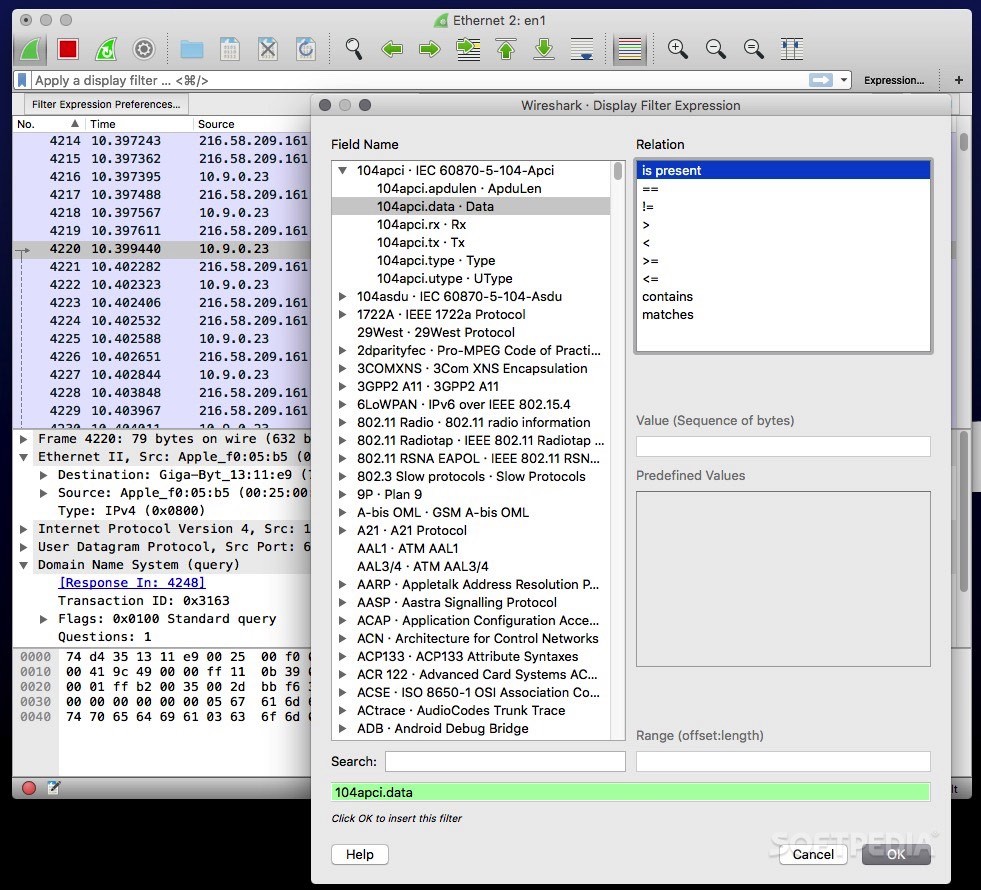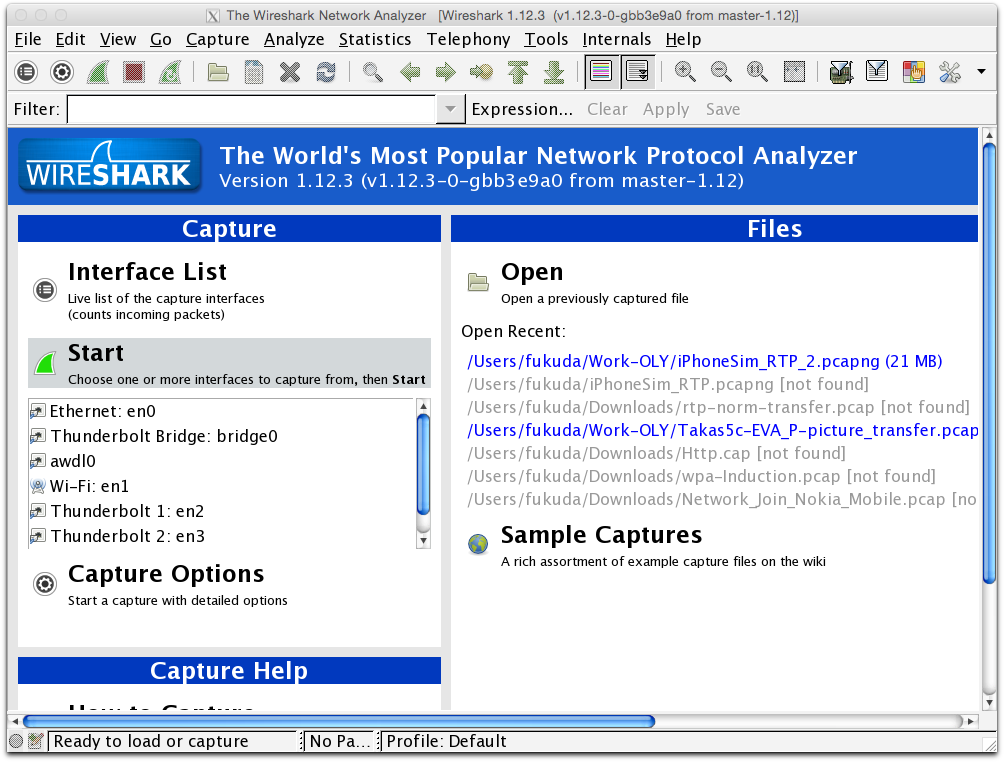

The controller can be outside the VM, and instructions for that are at the bottom.

Other topologies are also available out of the box see the -topo section in the output of mn -h.Īll four entities (2 host processes, 1 switch process, 1 basic controller) are now running in the VM. This topology could also be specified on the command line with -topo=minimal.
#Wireshark xquartz plus
The default topology is the minimal topology, which includes one OpenFlow kernel switch connected to two hosts, plus the OpenFlow reference controller. Start a minimal topology and enter the CLI: $ sudo mn In Wireshark, click Capture, then Interfaces, then select Start on the loopback interface ( lo).įor now, there should be no OpenFlow packets displayed in the main window. Protocol names, you may have to use a different version number for the filter. NOTE: In older versions of wireshark, the filter name is of. Next, in the Wireshark filter box near the top of its window, enter this filter, then click Apply: openflow_1 $ sudo apt remove libdouble-conversion3 # be sure to specify the right version On Ubuntu 20.04, the following may fix it: $ dpkg -l | grep libdouble-conversion # to see which version you have Wireshark (or specifcally libdouble-conversion) is broken on certain versions of Ubuntu. Remember to do this when you are running X11 clients or running mn -x! Fixing error: “ Could not load the Qt platform plugin "xcb"”Ĭould not load the Qt platform plugin "xcb" it may be because In order to get it to work with (any) X11 clients such as wireshark: $ sudo HOME=~ wireshark & If you are using X11 tunneling with ssh, you may need to pass an additional option to sudo Running Wireshark with X11 tunneling and ssh The xterm terminal emulator, used later in this walkthrough. Setting X11 up correctly will enable you to run other GUI programs and $DISPLAY not set, please consult the FAQ: If Wireshark is installed but you cannot run it (e.g.
#Wireshark xquartz install
You may be able to install both of them using Mininet’s install.sh script System you are using does not have Wireshark and the OpenFlow plugin installed, Wireshark is installed by default in the Mininet VM images. If Wireshark is not installed (command not found error) It is likely that this will not work immediately, so please read the following sections. To view control traffic using the OpenFlow Wireshark dissector, first open wireshark in the background: $ sudo wireshark & This walkthrough will cover typical usage of the majority of options listed. Type the following command to display a help message describing Mininet’s startup options: $ sudo mn -h Let’s get started with Mininet’s startup options. (and then press return, of course!) Display Startup Options In each case, you should only type the command to the right of the prompt

#Wireshark xquartz code
Tag to see code (including code in examples) which is consistent You check out Mininet from source, you may wish to check out the 2.0.0d4 Note: If you are using the Ubuntu Mininet 2.0.0d4 package, it uses a slightlyĭifferent syntax for Topo() - e.g.


 0 kommentar(er)
0 kommentar(er)
